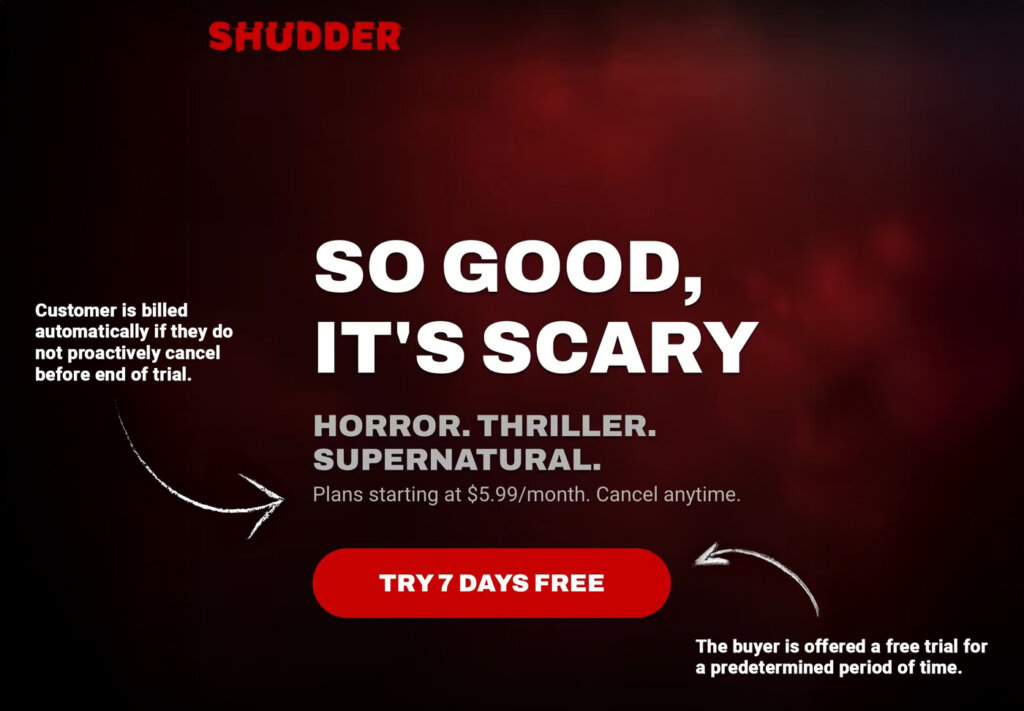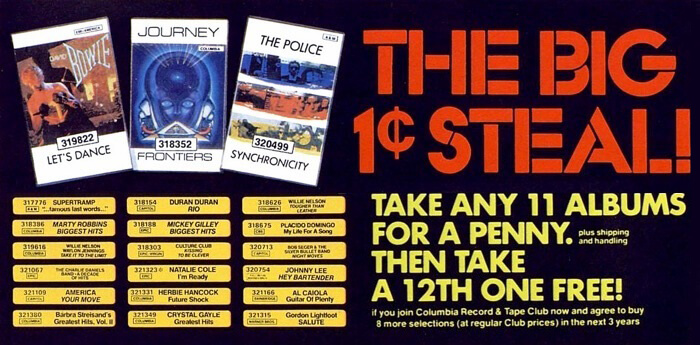Put a Positive Spin on Negative-Option Billing With This Handy Guide for Merchants
How many things have you bought because you were offered a “free trial?”
Maybe it was a sample box of cosmetics you received in the mail, a popular streaming service you wanted to check out, or a gym you have been interested in joining. Whatever the case, we’ve all signed up for a subscription service at one time or another.
Negative-option billing models are one subset of the broader subscription model. It’s an excellent way to bridge the marketing gap between your brand and consumers. There are a few drawbacks to be aware of as well, though.
In this article, we’ll explain what negative-option billing is, who benefits from it, the rules you should follow, and how to make it work for your business.
Recommended reading
- Know the Visa Recurring Payments & Subscription Guidelines
- The Top 12 Subscription Billing Platforms of 2025
- Visa Account Updater: What it Does & How it Works
- How Subscription Scams Work: Examples, Tactics & Prevention
- Involuntary Churn | What is it? How to Avoid Lost Sales
- FTC Publishes “Click-to-Cancel” Rule: Here’s What to Know
What is Negative-Option Billing?
- Negative-Option Billing
Negative-option billing is the practice of giving customers a service that was not previously provided, then charging them for the service unless they specifically decline it.
[noun]/neg • ǝ • div • äp • SHǝn • bil • iNG/
Negative-option billing has a lot of different applications. That said, it’s most commonly used in the case of free trial offers and similar promotions.
You offer a prospective buyer a free trial but collect the user’s payment information before the trial begins. Then, unless the buyer reaches out to cancel, you roll the trial over into an ongoing paid service.

After the trial period ends, the customer gets billed automatically. The merchant then rebills the customer on a regular basis (monthly, annually, etc.) until the customer cancels the service.
You enjoy a reliable source of revenue coming in regularly. In exchange, customers get access to goods or services they want without the need to remember monthly payments or renewals. It’s a win-win for you and your customers (at least, in most cases).
Is Negative-Option Billing Legal?
Yes, but only when negative-option plans are disclosed upfront and not marketed deceptively.
Yes, at least in a general sense. Laws vary by country, but negative option billing is considered legal in the US, as long as it is not “abusive.”
Unfortunately, cases exist in which merchants cross that line. For example, the FTC ruled back in 2001 that a group of buying clubs did not adequately disclose the terms of their customer agreement. The body ruled that this use of negative-option billing was unfair and abusive.
Enforcing that ruling is extremely difficult on an individual basis, though. The standards determining proper notice can be ambiguous. Plus, determining fair use of negative-option rules is done on a case-by-case basis. So, there’s some legal gray area regarding negative-option billing regulations.
Benefits of Negative Option Billing
When implemented correctly, negative-option billing features can bring in more business, lower prices for consumers, reduce marketing costs, and increase product reviews.
When executed properly, negative-option billing offers benefits for everyone. For instance, ‘free trial’ marketing can encourage many consumers to try a company or brand they otherwise might not have. It can also increase consumers' buying options and elevate their purchasing power by offering goods and services at discounted prices.
Negative-option billing lets you:
- Bring in new customers
- Reduce marketing costs
- Reach previously untapped audiences
- Offer lower prices for customers
In almost every way, negative-option models benefit both parties involved. As long as both parties are willing to make an effort to communicate with each other and maintain their end of the negative-option billing contract, that is.
Your job is to keep the consumer informed of the terms and conditions related to the subscription they’ve selected and remind them before the bill is due. And, the consumer’s job is to inform you of any billing issues or problems rather than relay that information to banks or third parties.
Potential Problems with Negative Option Billing
When best practices are ignored, negative-option billing can lead to reputational damage, more fees, and chargebacks.
Most subscription merchants implement negative-option features fairly and ethically. They make it clear up front that customers will be charged down the line, and are proactive about notifying cardholders when charges kick in.
But, not all merchants are as diligent about sticking to best practices as they should be.
Many think that canceling those “free” trials will be a huge hassle. This recently motivated the FTC to adopt new “click-to-cancel” rules to try and allay consumer fears. But, public opinion of negative-option billing remains mixed, at best.
If you engage in negative-option billing practices, you might face:
- Reputational harm due to past bad experiences with subscriptions
- Customers feeling overloaded with too many subscriptions
- Customers filing chargebacks instead of canceling services
- Restrictions and higher processing costs due to “high risk” status
When Best Practices Are Ignored: A Negative-Option Billing Case Study
Are you old enough to remember Columbia House mailers?
The company would advertise that customers could get several cassettes or CDs for as little as a penny each. Then, after getting their initial selections, the customer would receive a box full of merchandise Columbia House recommended based on those preferences. The customer would have a limited timeframe to return the CDs before they were charged for the whole box.

This was a successful model for several decades; revenue for Columbia House peaked in 1996 at $1.4 billion. But, the company also gained a reputation for making services difficult to cancel. They also experienced unresolved complaints, with buyers claiming to get billed for merchandise they didn’t want or order. Some even alleged that they did not join Columbia House, and had no idea how the company got their information.
This culminated in a class-action lawsuit in 2003, targeting Columbia House and several other “CD clubs” using a similar business model. The alleged “price-fixing conspiracy” resulted in a $143 million settlement.
I’m not trying to pick on Columbia House here. The reason I bring this up is to highlight the point that adherence to best practices is crucial for any merchant engaged in negative-option billing.
Negative Option Billing Best Practices
Best practices for negative-option billing include: be upfront, obtain affirmative written consent, make it easy to cancel, send billing reminders, and follow rules established by card networks and regulators.
Like I outlined in the case study above, you need to be diligent about negative-option billing best practices. The best advice I can give you is to follow card network rules very carefully and limit errors wherever possible.
Remember, chargebacks often result from misunderstandings over billing practices. So, to protect your business from chargebacks and remain compliant with network rules, it’s wise to:
Be Up-Front
Ensure your subscription policies, including your terms and conditions, are provided to your customers at checkout. The “three C’s” of writing a customer policy should be clear, concise, and comprehensive. If you bury your terms in the fine print, you can expect a bevy of chargebacks to follow.
Obtain Written Consent
It would be best to get proactive rather than passive confirmation at checkout. The buyer should provide acceptance of your subscription terms, and a copy should be emailed to your customer as a receipt. These forms should include an electronic signature and a repetition of the terms to which the buyer agreed.
Make Cancellation Easy
The more difficult you make it for consumers to cancel a subscription, the easier you’re making it for them to handle the matter through their bank instead. You lose money every time a chargeback is filed, whether the bank rules in your favor or not. Keep that in mind when drafting your subscription or ‘free trial’ terms. Customers should be able to cancel—or restart—their subscriptions with a few clicks.
Send Reminders
Billing reminders should be emailed to the customer at least one week before billing is processed. This is true, even if their due date is months after the trial. Each reminder should also include a link to cancel the service if the customer prefers to do that.
Follow the Rules
Trying to get around card network rules is simply bad for business. To provide the best customer experience and maintain a stellar reputation, abide by network rules and guidelines at all times.
Need a Hand?
No doubt about it: negative-option billing is a lucrative payment solution for many eCommerce businesses. As with any venture, however, risk is sometimes a factor.
The good news? You can pursue a negative-option billing and still manage your chargeback and fraud risk.
With over a decade of experience in the chargebacks and payment industry, the experts at Chargebacks911® are uniquely placed to help in the fight against chargebacks. Call us today for a free demo.
FAQs
What is an example of a negative option?
An example of a negative option is a free trial for a subscription that automatically upgrades to a paid subscription unless the customer cancels before the end of the trial period.
What is the negative-option rule?
The negative-option rule refers to a Federal Trade Commission (FTC) regulation that requires businesses to properly disclose the terms of negative-option recurring billing plans upfront so that customers can make informed decisions when signing up. The rule also requires merchants to make it easy for cardholders to cancel subscriptions with negative-option features, and to immediately cease billing once a plan is canceled.
Which type of transaction does the negative-option rule apply to?
The negative-option rule applies to all transactions involving recurring billing or subscriptions. These include gym memberships, magazine subscriptions, software-as-a-service (SaaS) subscriptions, TV streaming subscriptions, and other recurring services.
What is “bait marketing”?
Bait marketing is a deceptive marketing tactic in which a business or merchant advertises a product at a low price to “bait” or attract customers. Once a customer shows an interest in making a purchase, the merchant offers a different price or presents a different product or service purportedly for sale than the one initially advertised.














